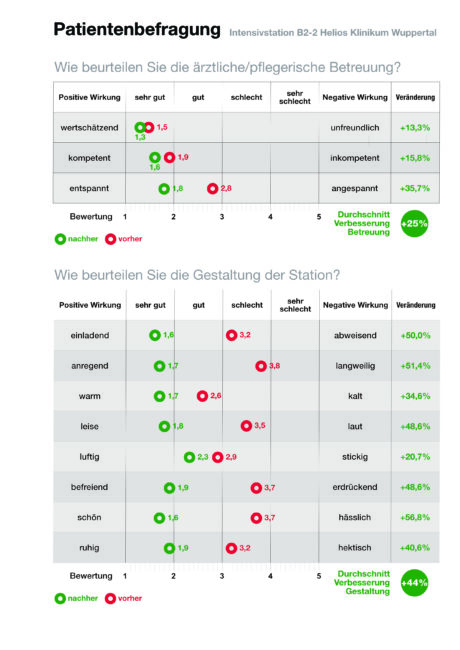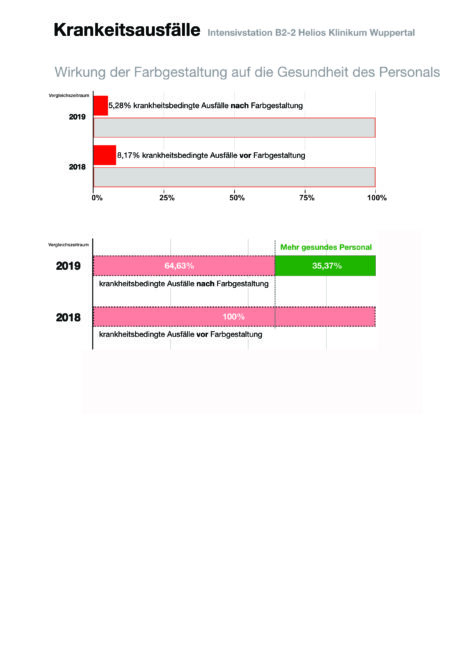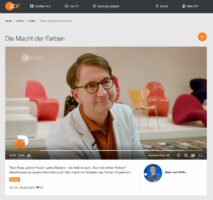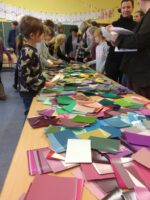
Assessment of the psychological and health effects of the environmental factors color and light on patients and staff in the intensive care unit B2-2 Helios University Hospital Wuppertal
Project partners:
Prof. Dr. Axel Buether
University of Wuppertal
Faculty of Design and Art
Dr. Gabriele Wöbker
Chief Physician of the Clinic for Intensive Care Medicine
HELIOS University Hospital Wuppertal
Witten/Herdecke University
Location and scope of the study:
HELIOS University Hospital Wuppertal – Clinic for Intensive Care Medicine Ward B2-2, scope: entire ward with 15 patient rooms, 21 beds and 4 doctors’ roomsWard B2-2 is the third and largest intensive care unit that we have designed and examined in the current research project. The results of our first study were incorporated into the planning for the redesign of Station B2-2.
Investigation period: 24 months (2018/19)
Research questions:
- What influence does the color and lighting design of intensive care units have on the well-being and state of health of patients?
- What influence does the color and lighting design of intensive care units have on the work motivation, attitude and well-being of medical and nursing staff?
- What influence does the color and lighting design of intensive care units have on staff sickness levels?
Summary of the results:
Significant improvements in the quality of stay and experience for patients and staff were observed and demonstrated in all areas surveyed. The sickness rate of staff on the ward fell by 35.37% within one year compared to the two previous years. The acute shortage of skilled workers lends additional relevance to this result.
The results of the patient surveys were particularly significant:
- Patients perceived the medical and nursing staff to be significantly more relaxed during care (improvement of 35.7%)
- after the redesign, the intensive care unit appeared much nicer (improvement of 56.8%), more stimulating (improvement of 51.4%), more inviting (improvement of 50.0%) and warmer (improvement of 34.6%)
- the atmosphere in the room appeared significantly quieter to the patients (reduction in noise level by 48.6%) and less hectic (improvement in quiet level by 40.6%)
This was particularly significant in the staff surveys:
- Staff satisfaction with the employer (improvement of 35.7%) and the work (improvement of 35.1%) increased significantly
- well-being was reflected in satisfaction with the condition of the workplace (improvement of 51.2%), the break room (improvement of 66.7%), the patient rooms (improvement of 48.8%) and the corridors and other work areas (improvement of 45.2%)
- The color design had a particularly strong impact on the assessment of orientation (improvement of 42.9%), colorfulness (improvement of 58.7%), artificial light quality (improvement of 52.4%), daylight quality (improvement of 48.7%) and identity (improvement of 50.0%)
Evaluation of the patient survey

Evaluation of the staff survey

Improved patient status in intensive care unit B2-2 after the color redesign



